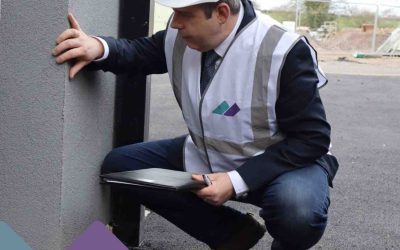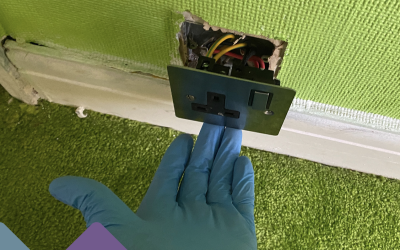Thank you for clicking on today’s Property Surveying blog post, we are going to be taking a deep dive into dilapidations and specifically yielding up.
Dilapidations are required when a tenant leaves the premises to which they have had a lease at the end of that lease’s term.
As part of a fully repairing and insuring lease (FRI), the tenant will retain maintenance and upkeep liabilities for their demised premises, and usually the property as a whole.
The premise behind this, is to ensure that a landlord is not unreasonably burdened with having to undertake costly repairs to their property that have been caused as a result of the tenant’s occupancy.
In the context of a residential lease, a tenant deposit would usually cover this, however within commercial leases this form of security or insurance is not common place or widely acceptable.
What Is Yielding Up?
Yielding up is a standard phrase and term that forms the vast majority of commercial leases throughout England and Wales.
The wording effectively means that the landlord can expect their property back in a presentable condition, and in many cases, where Building Regulation requirements have moved or changed from the tenant’s occupancy and start of their lease to the date of the lease’s termination, the tenant will be required to undertake those necessary improvement works.
Do I Have To Yield Up?
Again, another common question that we find ourselves asked here at Stokemont.
The requirement to yield up will very much depend on the specific wording within the lease.
Conventionally, leases will confirm that a tenant is expected to yield up.
However, as of recently, tenants have been slightly more savvy when it comes to agreeing leases and the terms that form them.
This has resulted in scenarios whereby tenants have been able to negotiate out their need to yield up upon the completion of their lease and its term.
Instead, what tenants often now find, is that they aren’t being held accountable for yielding up, and instead just need to present the property back to their property in a fair and reasonable condition.
Ultimately, the yielding up provisions will all depend upon the tenant and landlord’s negotiations in the run up to the lease’s agreement and signature.
What Happens At The End Of The Tenant’s Lease Term?
Once the tenant has completed, or is approaching the termination of the term of their lease, at this stage it is common place for both tenant and landlord, or their professional advisors, to enter into discussion about the what would be expected upon the tenant’s departure.
More often than not, the landlord will confirm their expectations from the tenant, they may even instruct a surveyor to visit the property to prepare a Schedule of Dilapidations or dilapidations report.
This report is going to ultimately set out the landlord’s expectations as to a financial figure that they expect to be paid by their tenant to rectify the various defects within.
Likewise, it is not uncommon for tenants to have their own surveyor visit and advise them of the likely dilapidations that they are going to be accountable for.
Thereby ensuring that they are given fair opportunity to remedy and rectify these issues prior to departing the property.
If you would like to discuss dilapidations and our commercial property services, please feel free to get in touch with our team of building surveyors today.
Based in Portland Close in London, we are on hand and very proud to have assisted a number of tenants and landlords within the local vicinity. We have also built up a track record on how to best handle Schedule of Dilapidations in a neutral and reasonable fashion.




